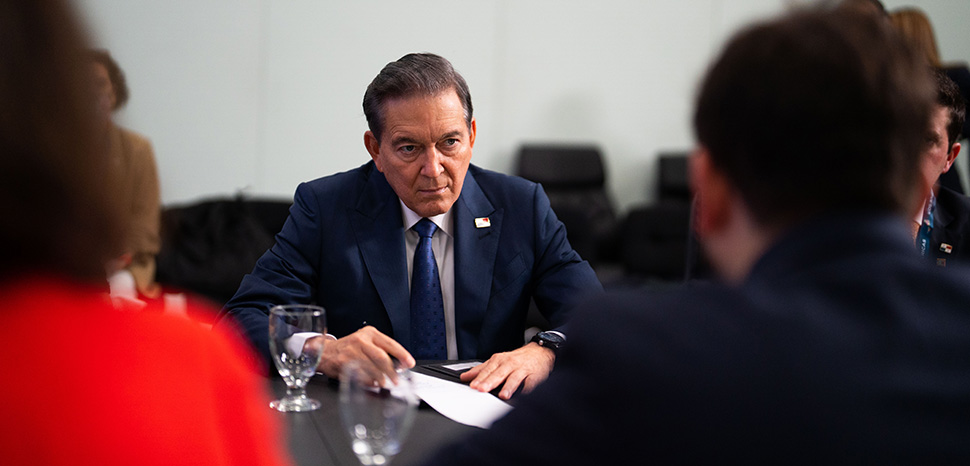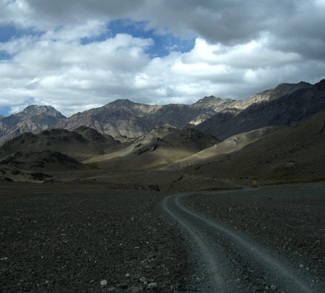Panama’s Supreme Court issued a historical ruling on 28 November. After deliberating for less than a week, the judiciary of the Central American country determined that a controversial and very unpopular contract between Canada’s First Quantum Minerals and the government of Panama is “unconstitutional.” While the dust still needs to settle, and repercussions are expected, including potential legal actions by First Quantum, the decision is a significant victory for the Panamanian environment and the people’s voice.
How Did We Get Here?
The situation commenced on 20 October, when the Panamanian Parliament passed a bill approving a contract between the state and First Quantum. The same day, President Laurentino Cortizo signed Law 406 (Ley 406), which approved the contract. In a 20 November press release, First Quantum highlighted its mining operations’ contributions to the Central American country. The “overall economic contribution of the mine to the State of Panama is estimated at more than $50 million per week, equivalent to around 5% of annual GDP.” As Geopolitical Monitor has previously discussed, the agreement awarded First Quantum’s Minera Panama (the subsidiary company) control of the Cobre Panama copper mine for 20 years.
The contract was not well received by the public due to environmental considerations and because local communities were not consulted. Massive protests ensued. President Cortizo announced that all new mining negotiations and permits would be suspended to calm the population. When that strategy did not work, he announced a referendum, scheduled for 17 December, where people would decide the future of Cobre Panama and the contract with First Quantum. That did not work either as the protests continued.
Several protests occurred in the capital, Panama City, where government buildings were ransacked. Moreover, major highways have been blocked, including the vital Inter-American highway. According to the Panamanian media, the Bocas del Toro and Chiriqui provinces were isolated from the rest of the country, so trucks with gas and other necessities could not arrive. Tourism has also been severely affected. Meanwhile, blocking the roads meant trucks with agricultural products could not reach major cities, including the capital; food prices skyrocketed.
One critical development is that Punta Rincón port, Eastern Panama, built and operated by Minera Panama to transport the copper, has been the target of protests (including by sea). On 20 November, the company announced that Minera Panama “has further ramped down operations at Cobre Panama to one remaining ore processing train. Without shipments arriving at the mine’s Punta Rincón port, it expects to run out of supplies for the on-site power plant during the week commencing 20 November 2023.” The company accused “the ongoing presence of an illegal blockade of small boats at the Punta Rincón port” which “continues to prevent the delivery of supplies that are necessary to operate the power plant.” The ramping down of the operations is also a prudent move to minimize potential violence. Protesters reportedly attacked buses carrying Minera Panama workers in late November.
Panamanian civil society also turned to the law, not just protests, to stop the controversial contract. Lawsuits were submitted to the Supreme Court of Panama alleging that Law 406 was unconstitutional. The Court commenced its deliberations on 24 November, and by 28 November, it ruled on their behalf.
The Fallout: Domestic Implications
Let us first discuss the fallout of this historical ruling from a domestic perspective. After the verdict was made public, President Cortizo gave a speech to the country, explaining that “as soon as we receive a formal communication of the ruling… we will publish it intermediately in the Gazeta Oficial [the state’s newspaper] and we will commence a transition for an ordered and secure closing of the mine.” The decision also forced a shake-up of the government as Commerce and Industry Minister Alfaro Boyd announced his resignation on 30 November, two days after the ruling; he was replaced the same day by Jorge Rivera Staff.
As for the situation on the ground, the government is eager for the protests to end and for people to return to work. Education Minister Maruja Gorday de Villalobos called for teachers to return to class to finish the school year. The request was also a warning, as the Education Ministry was looking to apply “administrative actions” against teachers who do not return to work, including not paying them for the second half of November. After the ruling was issued, the same Ministry announced that the measure will be suspended, and discussions with 24 teachers’ unions will begin to get teachers back in their classrooms by 4 December.
Moreover, Panama does not have armed forces; hence, internal security and border patrol operations are carried out by the police and specialized agencies like the Air-Navy National Service (Servicio Nacional Aeronaval: SENAN) and the National Border Service (Servicio Nacional de Fronteras: SENAFRONT). SENAN has deployed cargo vessels to the country’s islands in Chiriqui province to transport over 125,000 liters of milk meant for the capital. SENAN aircraft have been used to evacuate and transport medicine to that province.
As of 25 November, 1,274 individuals (1,119 adults and 155 minors) have been arrested for their role in the protests. For a country with an estimated population of 4.3 million, the number of detained people gives an idea of the size of the protests and the level of discontent. Ministry of Public Security Juan Manuel Pino argued that “extremist and violent groups” took advantage of popular discontent against Law 406 “to foment chaos and commit crimes like vandalism, attacking people, theft… and damage to private and public property.” The statements were likely a strategic move by the government to justify the security forces’ operations. The government had previously stated that it respected the right to peaceful assembly and protest. By arguing that “extremist and violent groups” carried out violent acts, authorities can imply that crackdowns by security forces were aimed at “violent” individuals, not the population in general.
First Quantum’s Response
In a carefully worded statement issued after the Supreme Court’s ruling, the Canadian company explained on 28 November,“the Company is reviewing the ruling and continues to reserve all its local and international legal rights in regards to developments in Panama.” In a previous statement, the company had mentioned its intention, along with Franco-Nevada Corporation, to begin arbitration proceedings at the International Centre for Settlement of Investment Disputes (ICSID). We can expect a lengthy and expensive legal case, or cases, about the Cobre Panama copper mine soon.
Interestingly, in the company’s recent statement, First Quantum once again mentioned the protesters “continued illegal blockades” at Punta Rincón port and on the roads to the site. As a result, “the Cobre Panama mine has suspended commercial production.” As previously mentioned, protesters have, in fact, blocked the Punta Rincón port. It is plausible to assume that protests around the mine, the port, and against mine employees will be used as evidence in the upcoming legal battle to justify any financial demands the Canadian company may have.
Finally, the 28 November statement explains, “the security and safety of the workforce at Cobre Panama remain a priority for the Company.” This is a curious statement as Minera Panama, First Quantum’s subsidiary, has issued an internal memo announcing that the contracts of approximately seven thousand mine workers will be temporarily suspended. While the company argues that it cares about the security and safety of its workers, their financial well-being is apparently not a major concern or priority. The mine workers are protesting because they are concerned about losing their jobs.
Looking Ahead
It is worth remembering that, as a way to calm the population, in late October, President Cortizo announced a referendum, to be held on 17 December, about the controversial contract with First Quantum. Given the Supreme Court’s ruling, it is unclear if the referendum will still occur. It would be logical for the referendum to happen since we can expect the majority of the population to vote against the contract. Hence, the Panamanian government can have more evidence to support its decision to shut down the mine in the upcoming legal battle with First Quantum.
The protests in Panama are the largest social upheaval since a military junta governed the country from 1968 to 1989, which ended with the downfall of General Manuel Antonio Noriega. In other words, the scale of the protests across the strategically located Central American country has not occurred in over a generation. Similarly, the decision by the Panamanian Supreme Court is a significant victory for the country’s population and environmental movement. Unfortunately, there are losers too, particularly the seven thousand employees of the mine, as First Quantum has “temporarily” suspended their contracts. Looking to the future, we can expect a very lengthy legal battle to commence soon between First Quantum Minerals and Panama’s government over the Court’s resolution.
The people’s will has been heard in Panama, and the environment around the Cobre Panama copper mine will be protected. Courts do not often side with the population against major corporations, particularly in the very profitable mining industry. Hence, this victory should be enjoyed, at least until Round Two begins.
Wilder Alejandro Sánchez is President of Second Floor Strategies, a consulting firm in Washington, D.C. He is an analyst who monitors defense & security, geopolitical, and trade issues across the Western Hemisphere, Eastern Europe, and Central Asia.
The views expressed in this article belong to the authors alone and do not necessarily reflect those of Geopoliticalmonitor.com.




